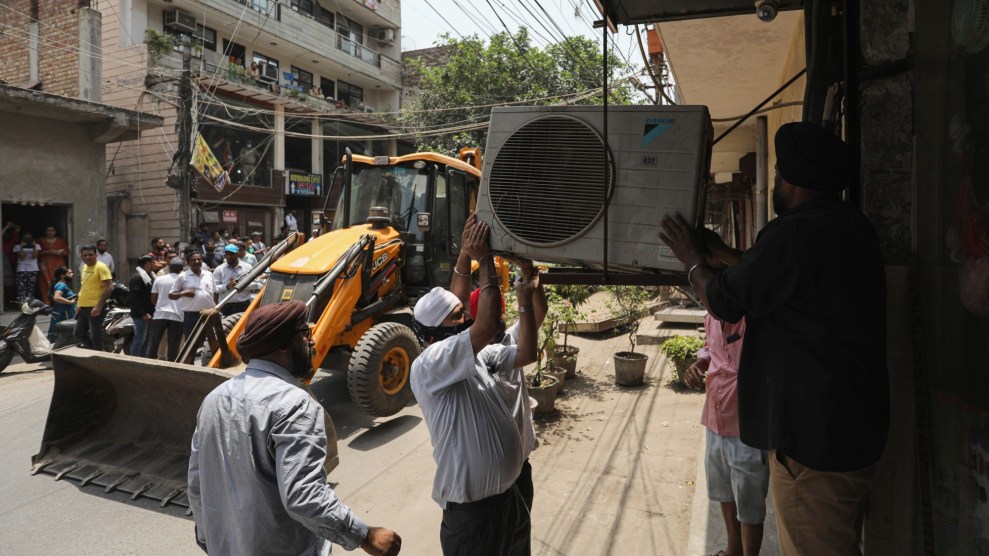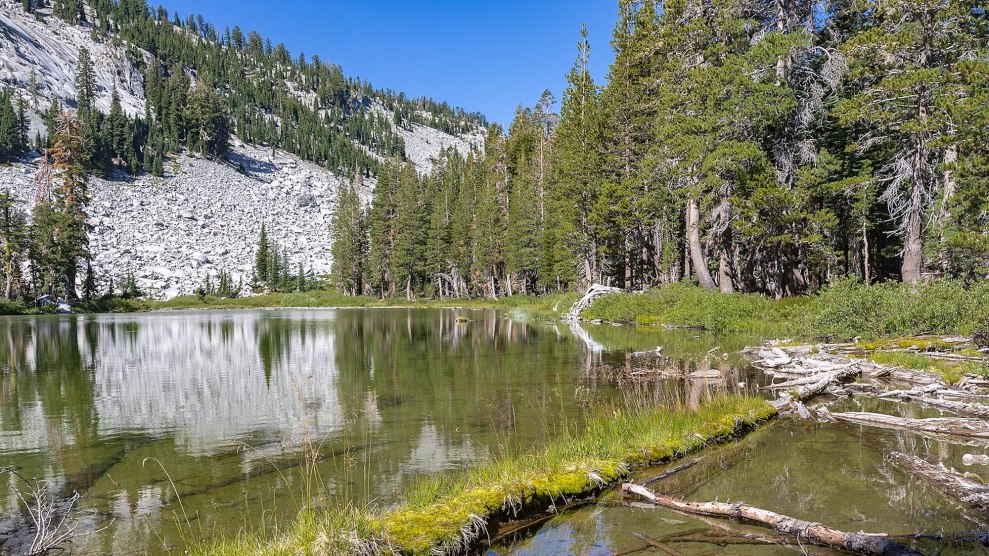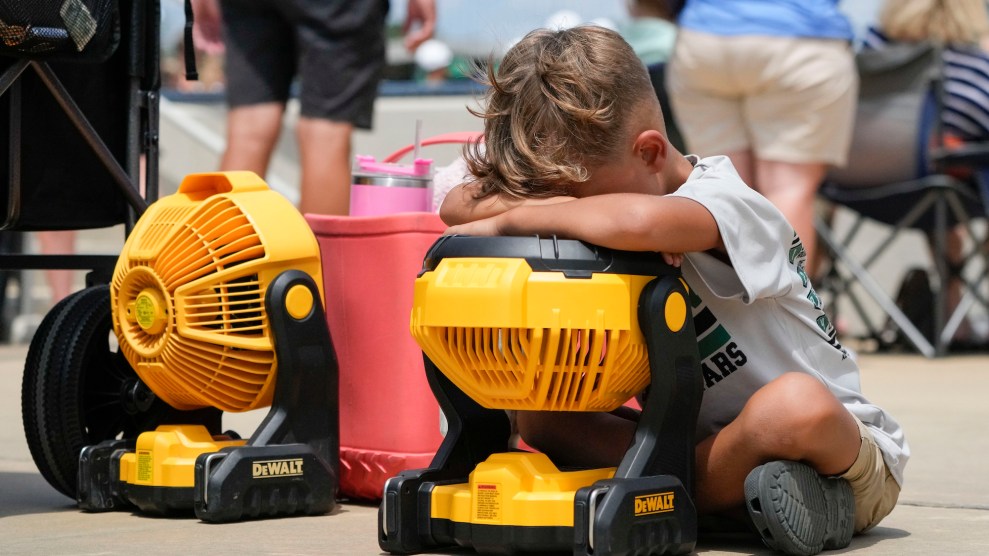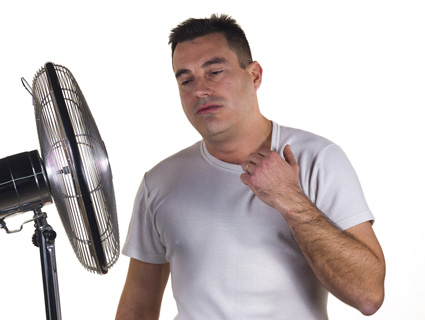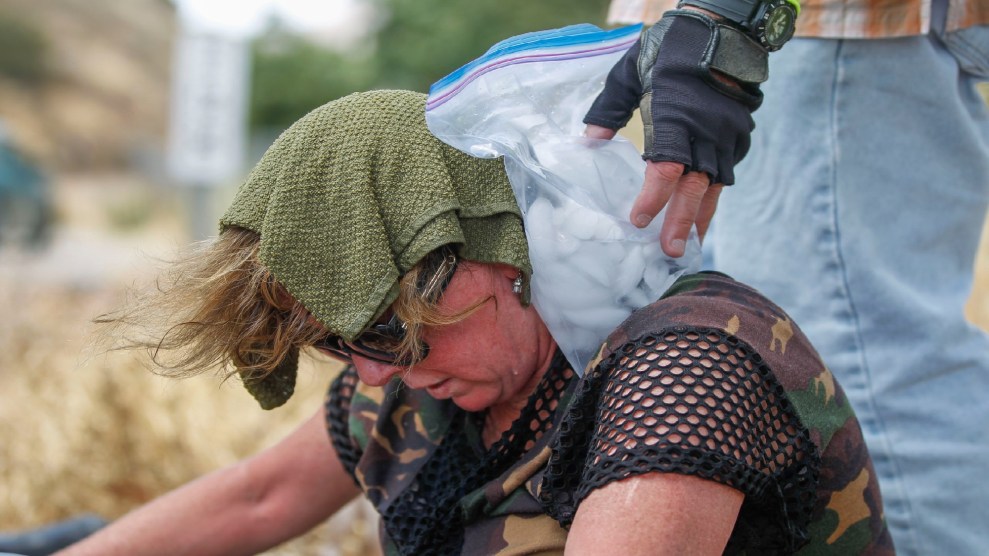
Cooling off during a California heatwave.HAYNE PALMOUR IV/SAN DIEGO UNION-TRIBUNE/ZUMA
This story was originally published by the Guardian and is reproduced here as part of the Climate Desk collaboration.
A brutal and long-lasting heatwave is threatening to wreak havoc across the US west this week, as sweltering conditions, power shutoffs and a severe uptick in wildfire risks coincide with Fourth of July celebrations.
Nearly 90 million people were under heat alerts from the National Weather Service (NWS) on Tuesday morning, as swaths of the south-central and western US were scorched. As pressure builds over the west through the week, the dangerous weather event is expected to stretch for days with little reprieve.
Starting Wednesday, parts of California will be subject to “extreme” levels of heat risk—reaching the highest level on the National Weather Service’s index—that will last until Sunday or longer. In some areas of the state, life-threatening triple-digit temperatures could linger for longer than a week.
“This is going to be a severe, prolonged, potentially record-breaking heatwave that may have large impacts for much of California,” said climate scientist Dr Daniel Swain during a broadcast discussion of the heat event on Monday. The long duration will only add to the potential impacts and intensity, especially because little relief can be expected even after the sun sets. “It just isn’t going to cool off—even at night,” he said.
“These are places where, yes, it is hot in summer—but it’s not often hot like this, and certainly not for this duration.”
While central and northern California are expected to bear the brunt of this event, areas in the southern part of the state are also going to cook. Heavily populated centers and rural agricultural enclaves alike could see record-setting highs during the day as well as record overnight temperatures.
NWS forecasters warned that several daily records in the San Joaquin and Sacramento Valleys could fall in the coming days. In the Central Valley, the state’s agricultural hub, temperatures are expected to hover near 110F through the week without dropping below 70F. Parts of Death Valley national park could climb up to 127F.
But the risks aren’t confined to California. NWS warnings, watches and advisories for excessive heat stretch from south-west Washington into Arizona. In Oregon, areas around the Willamette Valley and Medford will spend days above 100F, and temperatures could reach up to 115F.
“These are places where, yes, it is hot in summer—but it’s not often hot like this, and certainly not for this duration,” Swain said.
Extreme heat is the most deadly type of weather-related disaster, and the toll is on the rise. Forecasters warned the dangerous weather conditions this week will pose health risks to the majority of the population, especially those unable to access cooling.
Public health officials across the country cautioned against outdoor activities through the holiday weekend, calling residents and visitors in excessively hot areas to stay inside when possible.
“The important takeaway is that 95 percent of wildfires in California are human-caused, and the majority of them are preventable.”
A 69-year-old hiker died after becoming unresponsive on a trail in Grand Canyon national park, the National Park Service reported on Monday. The man, identified as Scott Sims, from Austin, Texas, was attempting an overnight stay in an area of the park that can reach 120F in the shade, park officials said, warning others against hiking in the inner canyon during peak-heat hours between 10am and 4pm.
The extreme weather will also set the stage for new wildfire ignitions that can quickly turn into infernos. An abundantly wet winter left landscapes across California coated in grasses that quickly dried as the weather warmed. The yellowing hillsides and valleys are thick with fuel for fast-burning brush fires. Even deserts, typically-barren this time of year, are now primed to burn. “Unfortunately, I am not using the term ‘if wildfires develop’ because I think it’s inevitable during this event,” Swain said.
Crews were battling small wildfires that popped up across California on Tuesday. The Thompson fire in Butte county prompted evacuation orders for an unknown number of homes in Oroville, a town of about 15,000 residents that is 70 miles north of Sacramento.
Fire risks always rise on the Fourth of July, when hot dry weather aligns with explosive celebrations. Across the country, more than 18,500 fires ignite on average due to Independence Day celebrations, whether from errant fireworks or badly tended campfires. But as the temperatures rise, so do the dangers. Both fire activity and fire behavior this week will likely be extreme and new ignitions may become difficult to contain.
“It’s going to be a challenge both day and night—so the message is prevention,” said the Cal Fire deputy director Nick Schuler. The agency is at peak staffing levels to prepare for what’s expected to be an extremely busy week, extending into an extremely busy summer. Already, California has seen more than 131,400 acres burn, with months left before the risks peak.
“The important takeaway is that 95 percent of wildfires in California are human-caused, and the majority of them are preventable,” Schuler said, noting that careless barbecuing, a spark from a trailer chain hitting the road or even some well-intended brush clearing can rapidly turn disastrous during the hottest days.
But the heat won’t only amplify the fire risks and intensity this week—it will also work to dry out more vegetation that could help fuel future fires.
A fiery start to July only adds to what’s been an incredibly hot spring. May wrapped up the 12th consecutive month of record warmth across the world. The trend continued in June in many places, including parts of California, and the summer is on track to be a scorcher. 2023 was declared the hottest year on record, and 2024 may quickly claim the title.
“Heat sucks the moisture out of vegetation and soil,” said Dr Alexander Gershunov, a research meteorologist with the Scripps Institution of Oceanography, noting that, while this may be the worst heatwave to hit California this year, it will be far from the last.
While individual weather events can be difficult to connect to global heating more broadly, “heatwaves are the most directly impacted” by the climate crisis, Gershunov explained. Fueled by human-caused warming, heatwaves are increasing in both intensity and frequency, but they are also lasting longer and covering wider areas than before. This has only added to their potential to affect human health and put strain on systems.
“Heatwaves are certainly the weather extremes that are impacted by the steroids of climate change,” he said, explaining that the effect is similar to an athlete taking performance-enhancing drugs.
Summer weather has been extreme before, but it’s going to get hotter.
“The trend is toward more frequent, more extreme, longer-lasting heatwaves all over the world,” he said. “California is certainly no exception.”
